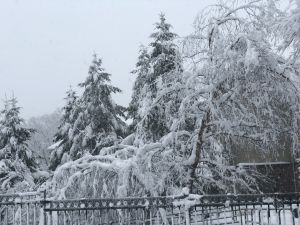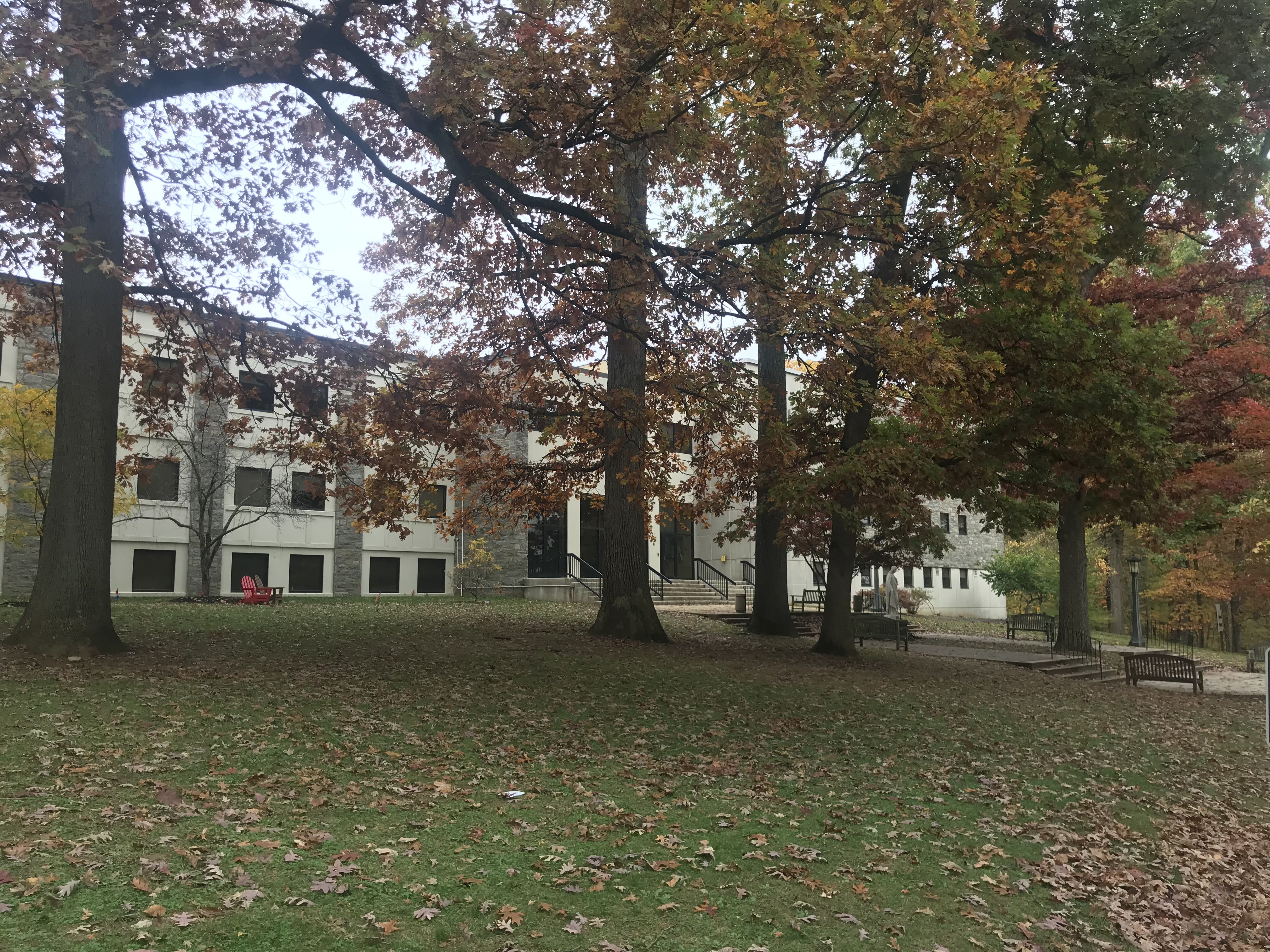
When walking around the Cabrini University campus, many students do not think anything of the trees surrounding them. No matter how little they are noticed, trees are a great resource for college campuses. According to North Carolina State University, one large tree can provide a day’s supply of oxygen for up to four people.
Due to new building projects that are set to occur Cabrini’s campus, such as the building of a new dorm building, parking garage and student center, many of these trees may soon be gone.
“Obviously there’s going to be removal of trees,” Brian Eury, chief of staff and vice president of external relations at Cabrini University, said, “but Radnor Township is one of the most progressive municipalities in the commonwealth.”
Radnor Township has a policy that for every one tree cut down, three trees need to replace it. A permit is also needed if a tree is to be cut down.
“The policy gets much more complicated the older the tree. This being an estate we have very large, epic trees,” Eury said. “About 119 trees will be removed and close to 400 trees will be replaced, so there will be ample trees. It will just take time for them to be the canopy we have right now.”
Radnor is a rarity with its strictness. In many places, policies such as this one are ignored or not followed through with.

“We’re really good at building Comcast building number two, but we’re not always good at replacing what comes from mother nature,” EPA Watershed Program Manager and Cabrini biology lecturer Ralph Spagnolo said. “You can try to plant new trees, but it takes a long time for a forest to grow back.”
On Cabrini’s campus, many of the trees have been located here for centuries. The campus is also known for having variety of tree species and a “cathedral of trees” that local tree enthusiasts can visit.
“Upon arriving in 2001, I realized we had a campus with many 100-year-old trees approaching their senior years,” Howard Holden, founder of the Radnor Township Shade Tree Commission, said. “It was time to start planting for the next 100 years as well as increase the diversity of species such that should any one species face a blight, others would still provide canopy.”

Trees such as the ones found on campus have many environmental benefits. According to the U.S. Forest Service, trees properly placed around buildings can reduce air conditioning needs by 30 percent and can save 20 to 50 percent in energy used for heating. On a place such as a college campus, this is a large amount.
If trees are replaced, the campus can retain the benefits. Sometimes tree removal is necessary to continue improving Cabrini’s campus.
“We should not needlessly remove trees for all the benefits they provide; however, there are times on a campus trees do need to be removed,” Holden said. “As with any campus, there may be times when the institution, to deliver its mission, may require tree removal in order to build new facilities to support that mission.”
Trees may be being cut down, but they will support President Donald Taylor’s of improving and updating the campus.
“You can’t stay pat, you have to keep moving and changing,” Taylor said. “We grow or we die.”
With these new improvements and more trees being planted, future Cabrini students may end up having the best of both worlds. The campus will be beautifully covered with trees for years to come.
“It is necessary to replenish the tree canopy through a consistent program,” Holden said. “The very word ‘campus’ suggests trees.”
Video by Coraline Pettine.



